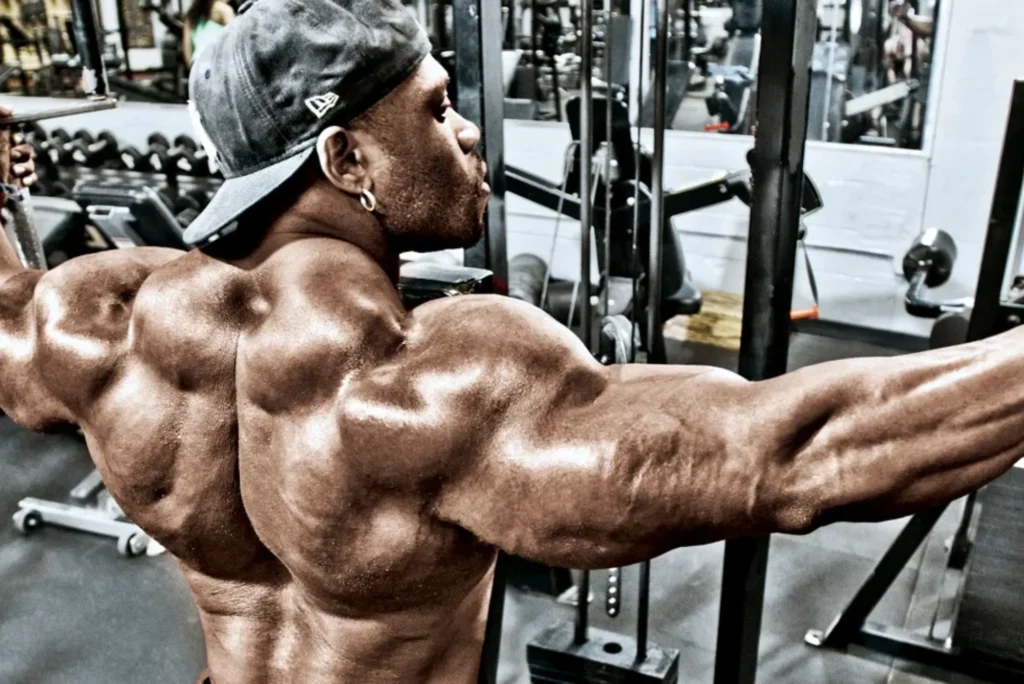In the pursuit of fitness goals, gaining strength is a fundamental objective for many gym-goers. Beyond just aesthetics, building strength enhances overall performance, improves functional abilities, and promotes long-term health. This guide aims to provide a comprehensive overview of how to effectively gain strength through gym workouts.
Understanding Strength Training Basics
Before diving into workouts, it’s crucial to understand the fundamental principles of strength training. From the different types of strength to the concept of progressive overload, grasping these basics lays a solid foundation for your strength journey.
Designing an Effective Workout Routine
Crafting a well-rounded workout routine is crucial for making significant strides in your strength-building journey. Here’s how to structure an effective routine, incorporating the essential component of gym chest workouts for optimal upper body strength development:
Set Clear Goals:
Start by defining your fitness goals, whether it’s increasing overall strength, building muscle mass, or improving athletic performance. Having clear objectives will guide the design of your workout routine and help you stay focused and motivated.
Structuring Workouts for Progression:
Plan your workouts with a focus on progressive overload, the key principle behind strength gains. Gradually increase the intensity, volume, or resistance of your exercises over time to continually challenge your muscles and stimulate growth. Incorporate compound movements like bench presses, dumbbell flyes, and push-ups into your gym chest workouts to target the major muscle groups in your chest effectively.
Balanced Training Split:

Design a balanced training split that targets all major muscle groups while allowing for adequate rest and recovery. Consider a split routine that divides workouts into specific muscle groups or movement patterns, such as upper body/lower body splits or push/pull/legs splits. Ensure that gym chest workout is integrated into your routine at least once or twice a week to prioritize upper body strength development.
Exercise Selection and Variation:
Choose a variety of exercises that target different muscle groups and movement patterns to ensure comprehensive muscle development. In addition to traditional chest exercises like bench presses and chest flies, incorporate variations such as incline presses, decline presses, and cable crossovers to target different areas of the chest from various angles.
Progressive Overload:
Implement progressive overload principles by gradually increasing the weight, reps, or sets of your gym chest workouts as your strength improves. Keep track of your progress and strive to challenge yourself with each workout to stimulate continuous muscle growth and strength gains.
Rest and Recovery:
Allow adequate rest and recovery between workouts to optimize muscle repair and growth. Incorporate rest days into your routine, and avoid overtraining by listening to your body’s signals and adjusting your workout intensity accordingly. Adequate rest ensures that you can perform at your best during each gym chest workout and prevent the risk of overuse injuries.
Proper Form and Technique
Maintaining proper form and technique is paramount in preventing injuries and maximizing the effectiveness of your workouts. Learn the correct techniques for each exercise, focus on mind-muscle connection, and be mindful of common mistakes to avoid.
Nutrition for Strength Building
Nutrition plays a crucial role in supporting strength gains. Ensure you’re fueling your body with the right balance of macronutrients, paying attention to meal timing, and staying hydrated to optimize your performance in the gym.
Recovery and Rest
Recovery and rest are indispensable components of your journey to gain strength in the gym. Here’s why prioritizing recovery is essential and how you can optimize your rest periods for maximum gains:
Understanding the Role of Recovery in Strength Gains:
While intense workouts are necessary to stimulate muscle growth, it’s during the recovery phase that your muscles repair and grow stronger. Without adequate recovery, your muscles may not have sufficient time to repair the damage caused by training, which can impede your progress in gaining strength in the gym.
Importance of Quality Sleep:
Quality sleep is one of the most critical aspects of recovery. During sleep, your body releases growth hormone, repairs damaged tissues, and consolidates learning and memory. Aim for 7-9 hours of uninterrupted sleep per night to optimize recovery and support your efforts to gain strength in the gym.
Incorporating Active Recovery Strategies:
In addition to sleep, incorporating active recovery strategies can further enhance your recovery between workouts. Activities such as light cardio, stretching, yoga, and foam rolling can improve blood flow, reduce muscle soreness, and promote flexibility, allowing you to recover more quickly and perform better in subsequent workouts.
Listen to Your Body:
Pay attention to signals from your body indicating when you need to rest and recover. If you experience persistent fatigue, soreness, or decreased performance in the gym, it may be a sign that you need to dial back your training intensity or take a rest day. Pushing through fatigue or overtraining can increase your risk of injury and hinder your progress in gaining strength.
Nutrition for Recovery:
Proper nutrition plays a crucial role in supporting recovery and replenishing energy stores after intense workouts. Ensure that you’re consuming an adequate amount of protein, carbohydrates, and healthy fats to fuel your recovery and provide your muscles with the nutrients they need to repair and grow stronger.
Tracking Progress
Tracking your progress is key to staying motivated and ensuring you’re moving in the right direction. Keep a workout journal, measure performance metrics, and celebrate milestones along the way.
Overcoming Plateaus and Challenges
In any fitness journey, encountering plateaus and challenges is inevitable. However, with the right strategies and support, you can overcome these obstacles and continue making progress towards your strength goals. Here’s how you can navigate through plateaus and challenges, with the assistance of services like Amana Health Care for holistic wellness:
Strategies for Breaking Through Plateaus:
When progress stalls, it’s essential to shake things up and introduce new stimuli to your workouts. Incorporate techniques such as periodization, where you cycle between phases of varying intensity and volume, to keep your body guessing and prevent adaptation. Additionally, try altering your exercise selection, rep ranges, or training split to challenge your muscles in new ways and stimulate growth.
Dealing with Mental Barriers and Setbacks:
Plateaus can take a toll on your motivation and mental resilience. It’s crucial to stay positive and maintain a growth mindset, recognizing that setbacks are a natural part of the fitness journey. Practice self-compassion and focus on the progress you’ve already made, rather than fixating on temporary obstacles. Seek support from friends, family, or professionals at Amana Health Care who can provide encouragement and guidance during challenging times.
Seeking Support from Professionals, such as Amana Health Care:
Sometimes, overcoming plateaus requires a holistic approach that addresses not only physical but also mental and emotional well-being. Services like Amana Health Care offer comprehensive wellness programs designed to support individuals in achieving their fitness goals. Whether through personalized coaching, nutritional counseling, or stress management techniques, seeking professional support can help you navigate through plateaus and emerge stronger on the other side.
Injury Prevention and Rehabilitation
Injury prevention and rehabilitation are vital aspects of any fitness regimen, especially when striving to gain strength in the gym. Here’s a comprehensive overview of how to prevent injuries and effectively rehabilitate them if they occur:
Importance of Injury Prevention:
Injuries can derail your progress and hinder your ability to gain strength effectively. Prioritizing injury prevention is crucial for maintaining consistency in your training and avoiding setbacks that could impede your progress.
Warm-Up and Cool-Down:
Start each workout with a thorough warm-up to prepare your muscles, joints, and connective tissues for the demands of exercise. A dynamic warm-up consisting of movements that mimic the exercises you’ll be performing can increase blood flow, improve flexibility, and reduce the risk of injury. Similarly, incorporate a cooldown period at the end of your workout to gradually bring your heart rate down and stretch tight muscles, aiding in recovery and reducing muscle soreness.
Proper Technique and Form:
Maintaining proper technique and form is essential for preventing injuries during strength training exercises. Focus on executing each exercise with precision, paying attention to alignment, range of motion, and muscle engagement. If you’re unsure about proper form, consider working with a qualified personal trainer who can provide guidance and corrections.
Gradual Progression:

Avoid the temptation to increase the intensity or volume of your workouts too quickly, as this can increase your risk of overuse injuries. Instead, focus on gradual progression by progressively increasing the weight, reps, or sets of your exercises over time. Listen to your body and give yourself adequate time to adapt to new challenges to prevent overtraining and injury.
Listen to Your Body:
Pay attention to any signs of discomfort or pain during your workouts and address them promptly. Ignoring pain can lead to further injury and prolonged recovery time. If you experience persistent pain or discomfort, consider scaling back your training intensity, modifying your exercises, or seeking professional guidance from a physical therapist or healthcare provider.
Rehabilitation Strategies:
If you do sustain an injury, it’s essential to prioritize rehabilitation to facilitate a safe and speedy recovery. Depending on the nature and severity of the injury, rehabilitation may involve a combination of rest, physical therapy, stretching, strengthening exercises, and other modalities to promote healing and restore function. Follow your healthcare provider’s recommendations closely and be patient with the rehabilitation process, as rushing back to exercise too soon can exacerbate the injury and prolong recovery time.
Staying Motivated and Consistent
Consistency is key to success in gaining strength. Find motivation from both intrinsic and extrinsic sources, set realistic expectations, and surround yourself with a supportive community to keep you accountable.
Building strength in the gym is a journey that requires dedication, perseverance, and knowledge. By following the principles outlined in this guide, you can embark on a fulfilling strength-building journey that not only transforms your physique but also enhances your overall well-being. Remember, strength is not just about lifting weights; it’s about unlocking your full potential, both inside and outside the gym.




